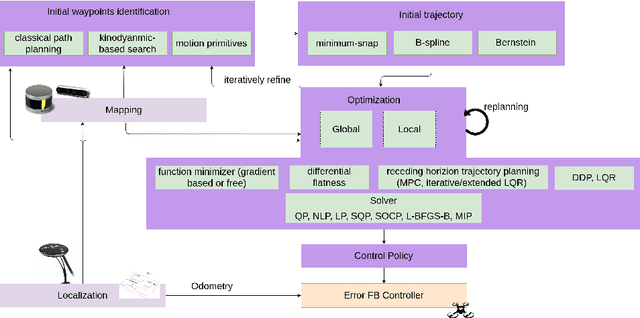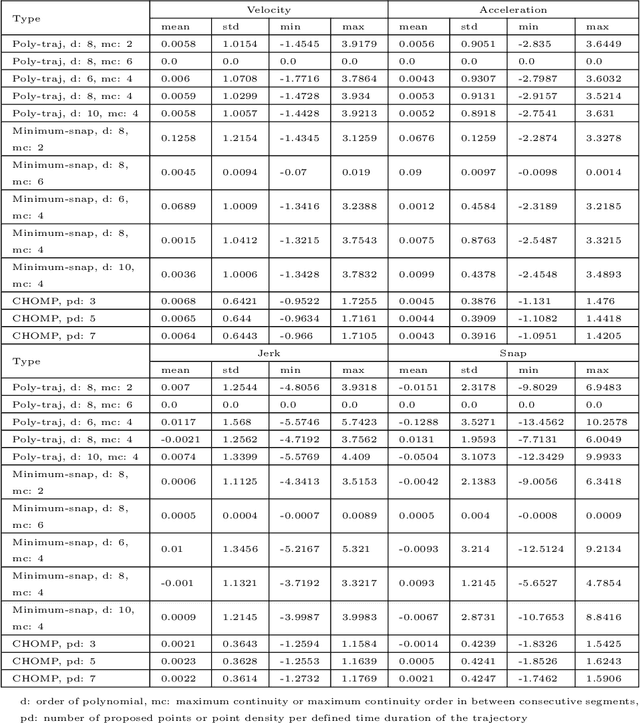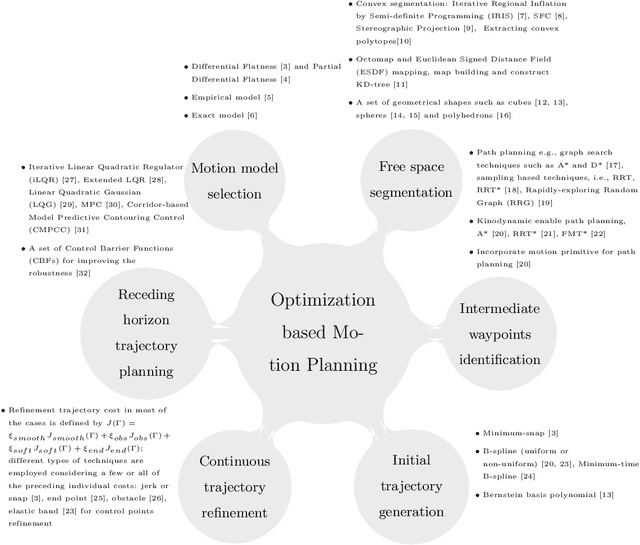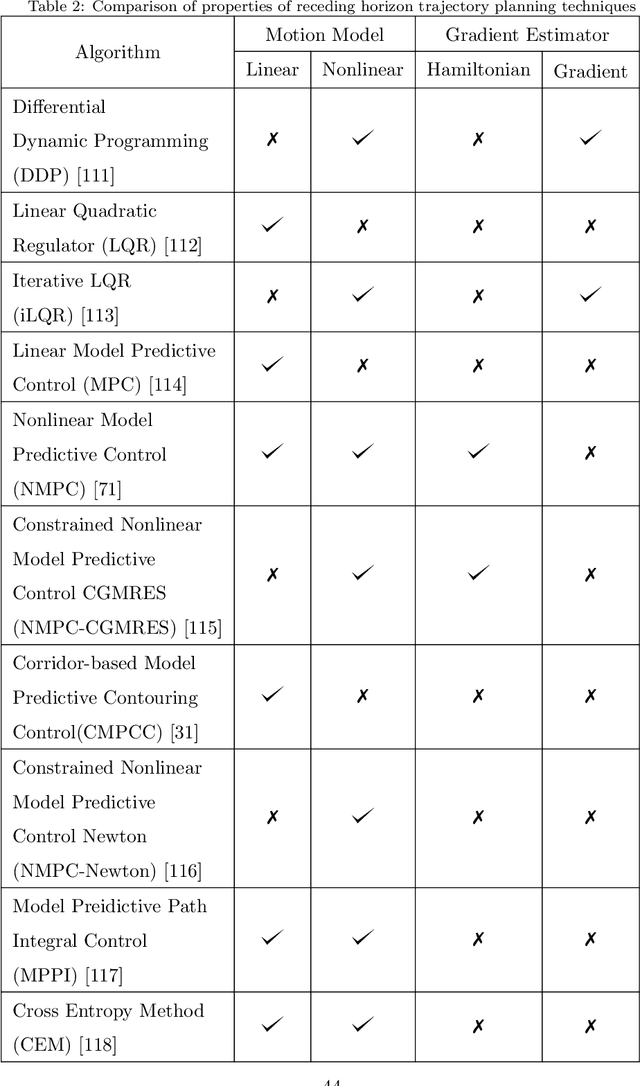Optimization-based Motion Planning for Multirotor Aerial Vehicles: a Review
Paper and Code
Aug 31, 2022



In general, optimal motion planning can be performed both as local and as global. In such a planning, the choice in favor of either local or global planning technique mainly depends on whether the environmental conditions are dynamic or static. Hence, the most adequate choice is to use local planning or local planning alongside global planning. When designing optimal motion planning both as local or as global, the key metrics to bear in mind are execution time, asymptotic optimality, quick reaction on dynamic obstacles. Such planning approaches can address the aforesaid target metrics more efficiently compared to other approaches such as path planning followed by smoothing. Thus, the foremost objective of this study is to analyse related literature in order to understand how the motion planning, specially trajectory planning, problem is formulated, when being applied for generating optimal trajectories in real-time for Multirotor Aerial Vehicles (MAVs), impact the listed metrics. As result of the research, trajectory planning problem was broken down into a set of subproblems, the lists of methods for addressing each of the problems were identified and described in detail. Subsequently, the most prominent results from 2010 to 2022 were summarized and presented in the form of a timeline.
 Add to Chrome
Add to Chrome Add to Firefox
Add to Firefox Add to Edge
Add to Edge